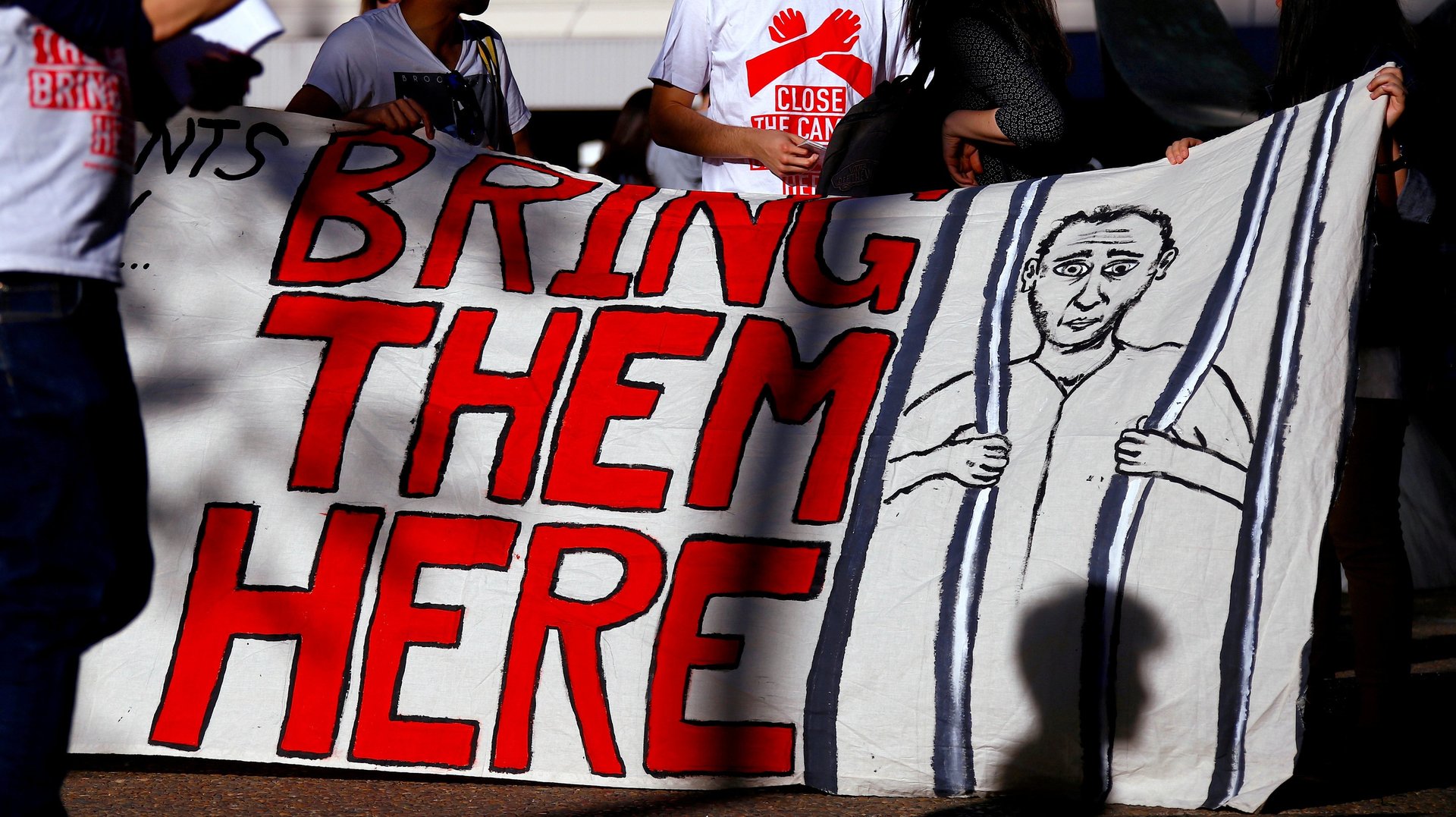The fate of hundreds of refugees stranded on Pacific islands hangs on the goodwill of Donald Trump
Last November, the US agreed to consider relocating some of the refugees who have been languishing for years in offshore detention facilities on the remote Pacific islands of Manus (part of Papua New Guinea) and Nauru (an island nation).


Last November, the US agreed to consider relocating some of the refugees who have been languishing for years in offshore detention facilities on the remote Pacific islands of Manus (part of Papua New Guinea) and Nauru (an island nation).
But many of the refugees, who had tried to enter Australia by sea, were themselves skeptical—and they were right to be, it turns out.
On Jan. 27, Donald Trump signed an executive order that shuts the United States to all refugees for the next four months, and to Syrian refugees indefinitely. It also bans entry for citizens from seven Muslim-majority nations—Iraq, Syria, Iran, Sudan, Libya, Somalia, and Yemen—and makes them subject to what Trump calls “extreme vetting.”
For the refugees on Manus and Nauru, many of whom come from those very nations and suffered arduous journeys before reaching Oceania, that could mean being stuck on the islands—and in political limbo—even longer.
Since July 2013, Australia has had an extreme policy about refugees arriving by boat: Not only are they not allowed into the country, but they are permanently banned from it—even if they have legitimate reasons to claim asylum.
For the past three and a half years, over 2,000 people have been sent to the islands. As a series of leaked reports show, they are subject to continuous violations of human rights perpetrated by custody personnel and others, including sexual abuse (targeting children especially). Depression and mental illness due to the conditions are common on the islands, as are suicide attempts.
Australia has faced international pressure against its stance, including criticism by the United Nations High Commission for Refugees (UNHCR). In 2015 the nation accepted less than 14,000 refugees; by way of comparison, Germany took in nearly 900,000 that year. Australia remains adamant in refusing to take in those held in the detention facilities “in defiance of international treaties,” says Margaret Huang, executive director of Amnesty International.
“Australia continues with this policy because it has popular support,” explains Elaine Pearson, the Australia director of Human Rights Watch. She says the government, led by Malcolm Turnbull, thinks a strict policy against “boat people” will discourage others from also trying to get to Australia via sea, though she adds there’s little evidence to support this. Meanwhile, she notes, keeping refugees in offshore detention centers is costing Australia over A$1 billion (US$756 million) a year.
In the face of Australia’s inflexibility, the US stepped in to help, but it only “agreed to consider” referrals from the UNHCR regarding the refugees on Nauru and Manus. That means, technically at least, it could accept none of them and still “honor” the arrangement. So far, US officials have visited the islands and started “to interview refugees to establish resettlement priorities,” says Pearson. “But the agreement didn’t come with dates by which the resettlement was planned.”
As for Trump’s executive order, lobbying from Australia led to a last-minute addition (paywall) to consider a case-by-case admission “when admitting the person would enable the United States to conform its conduct to a pre-existing international agreement.” Turnbull, after a phone conversation with Trump, said on Jan. 30 that the US would “honor that existing agreement.”
But “we have no timeline… we could be waiting for a very long time,” says Pearson. And, she adds, “Frankly, the US president may change his mind.”
For the time being, there is still no plan for the refugees, and it’s unclear who’s going to ensure their relocation happens in a timely fashion. But for all the additional uncertainty added by Trump’s order, the “responsibility does lie with Australia on regards to refugees,” says Huang of Amnesty International.
“The policy shouldn’t be held hostage [to] the goodwill of the president of the US,” says Pearson. “The sensible thing would be for these refugees to be sent to Australia. Some of them have family ties here [in Australia]. That’s why they try to come.”